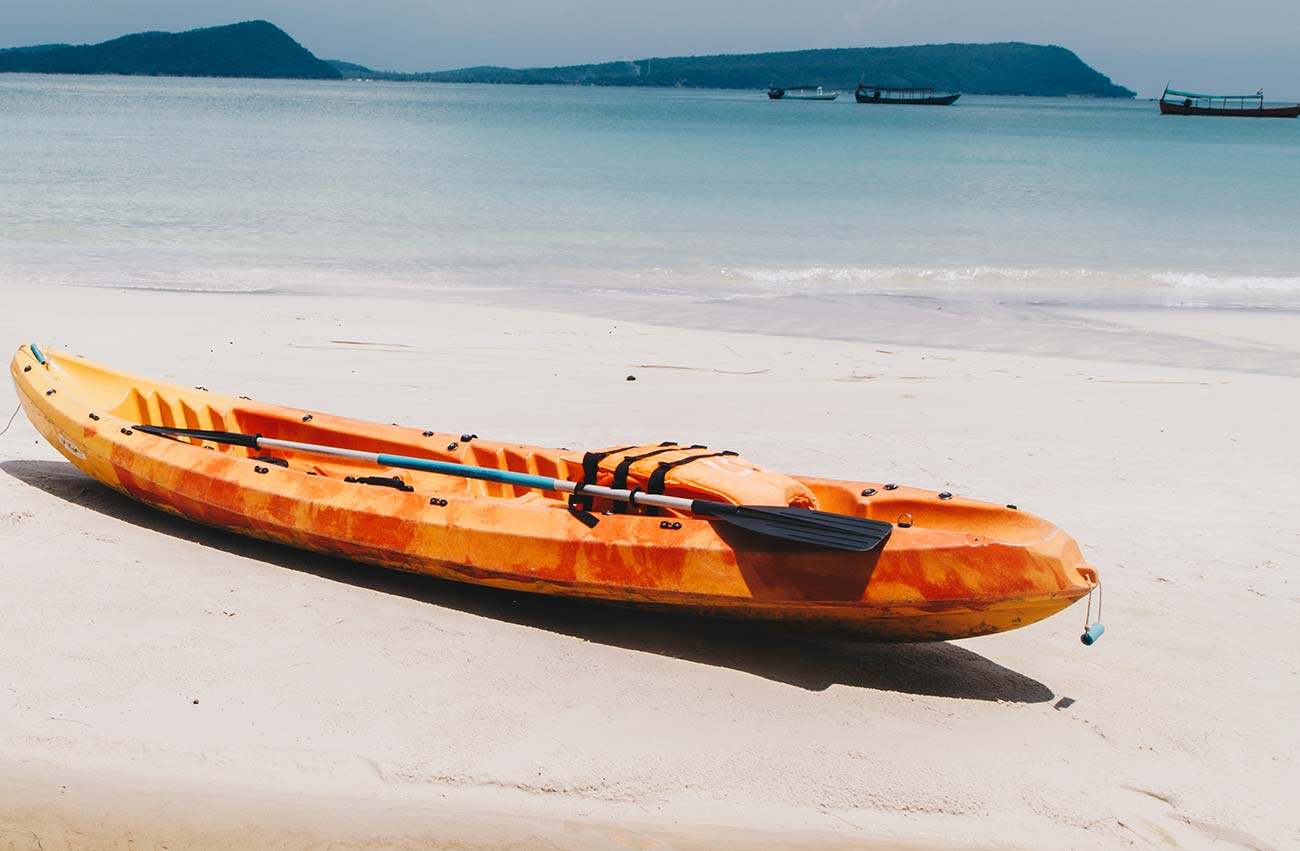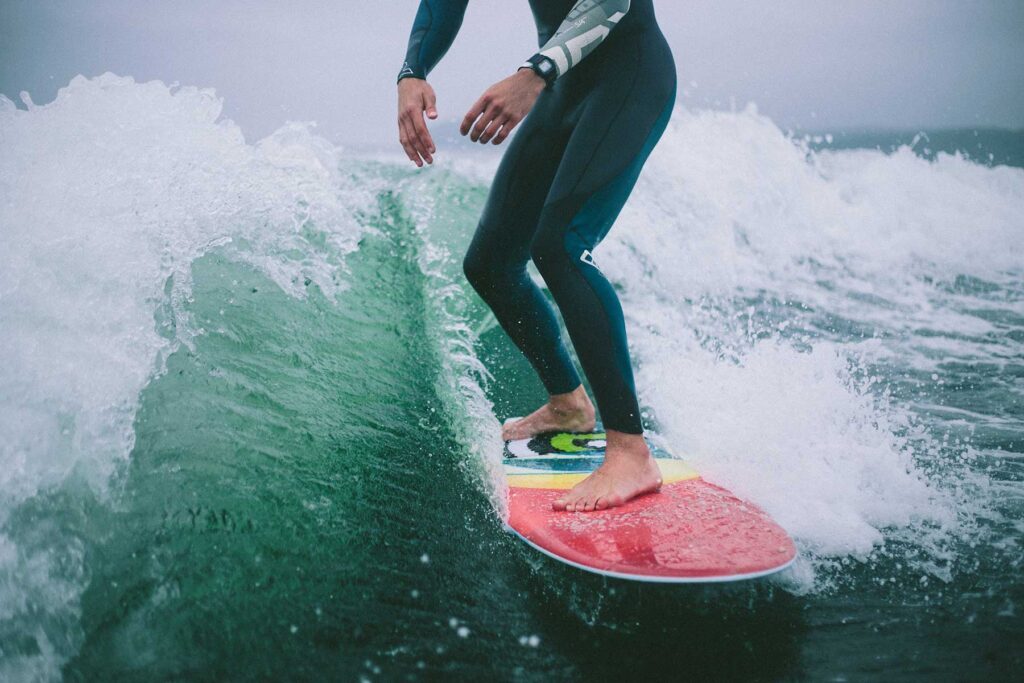
What is a Sailboard? A Complete Guide for Beginners
A sailboard—also referred to as a windsurfing board—is a type of watercraft used in the thrilling sport of windsurfing. Combining surfing and sailing, this unusual board lets you use the wind to glide across the water. The sail, mast, boom, and specialized board on the sailboard provide an exciting and dynamic means of experiencing water sports.
This guide will cover everything you need to know about sailboards, including basic maintenance and safety advice, from how they operate to selecting the correct one.
Key Components of a Sailboard
A sailboard consists of several important components that allow it to function effectively on the water. These parts include:
- Board: The sailboard itself, which is often lightweight and designed to float on water.
- Sail: The main source of propulsion, made from durable fabric, attached to the mast.
- Mast: The vertical pole that holds the sail in place.
- Boom: A horizontal bar that the rider holds onto to control the sail’s angle.
- Fin: A stabilizing fin at the bottom of the board that helps with direction and balance.

How Does a Sailboard Work?
The sailboard works by using the wind’s energy to move across the water. Here’s a step-by-step breakdown of how it operates:
- Wind Power: The wind fills the sail, creating force that pushes the sailboard forward.
- Sail Adjustment: The rider controls the sail’s angle to optimize the wind’s energy. Tilting the sail in different directions changes speed and direction.
- Balance and Control: The rider uses their body weight to balance on the board while steering using the boom to adjust the sail.
By learning to control the sail and use the wind to your advantage, you can navigate the waters smoothly, whether you’re sailing straight or performing tricks.
Types of Sailboards
Not all sailboards are the same. Depending on your skill level and the type of water conditions you plan to ride in, there are various types of sailboards to choose from:
| Type of Sailboard | Best For | Ideal Conditions | Characteristics |
| Freestyle Sailboard | Advanced riders looking for tricks | Calm water or light winds | Lighter, smaller, more maneuverable |
| Slalom Sailboard | Speed enthusiasts | Strong, consistent winds | Narrow, long boards for speed |
| Wave Sailboard | Ocean wave riders | Rough water, waves | More stable, great for wave riding |
| Beginner Sailboard | New windsurfers | Light winds and calm water | Larger, more stable for easy balancing |
Each type of sailboard has its specific design to meet different rider preferences, so selecting the right one is key to enjoying your windsurfing experience.
Choosing the Right Sailboard for You
Choosing the right sailboard depends on several factors, including your level of experience, the type of water conditions you will face, and personal preferences. Here are a few tips for selecting the best sailboard:
1. For Beginners
If you’re new to windsurfing, choose a sailboard with the following features:
- Larger and Wider Boards: These boards offer more stability, making them easier to balance.
- Smaller Sails: A smaller sail is easier to handle in light winds.
A beginner sailboard should focus on comfort and control, helping you build confidence on the water.
2. For Intermediate Riders
As you gain experience, you may want to try a more maneuverable sailboard. Consider the following:
- Moderate-sized Boards: A board that is slightly narrower will offer more responsiveness without sacrificing stability.
- Medium-sized Sails: These sails provide a good balance between speed and control.
3. For Advanced Riders
Experienced riders who seek speed and high performance should look for:
- Narrow, Sleek Boards: Designed for speed and quick turns.
- Large Sails: Great for capturing more wind power and boosting speed.
Sailboard Maintenance Tips
To ensure your sailboard lasts for years and performs well, it’s important to maintain it properly. Here are some maintenance tips:
- Clean After Use: Always rinse the board and sail with fresh water to remove saltwater and debris.
- Inspect for Damage: Check the board and sail for cracks, tears, or other damage. Small issues should be repaired quickly.
- Store Properly: Keep your sailboard in a cool, dry place away from direct sunlight to prevent UV damage.
Regular maintenance ensures that your sailboard stays in top shape, allowing you to have the best experience possible each time you ride.
Safety Tips for Sailboarding
Safety should always be a priority when using a sailboard. Here are some essential safety tips:
- Wear a Life Jacket: Ensure you always wear a personal flotation device (PFD) to stay safe in case of a fall.
- Check Weather Conditions: Avoid sailboarding in extreme wind conditions or storms.
- Use Protective Gear: Protect your hands and body with gloves, a harness, and proper footwear.
Conclusion
Finally, a sailboard is an exciting and energetic watercraft used in windsurfing. Several kinds of sailboards fit many needs and tastes regardless of experience level. Understanding how sailboards operate, selecting the correct gear, and keeping it in good shape will help you enjoy many hours of adventure and fun on the water. Following safety rules will help you to ensure a safe and fun ride every time!
FAQs related to the topic of sailboard:
1. Describe a sailboard and its working principles.
A sailboard is a watercraft used in windsurfing, whereby a board and a sail are combined. The board is driven across the water as the sail catches the breeze. The rider can control the speed and direction of the sailboard by changing the sail’s angle and applying body weight for balance. As the primary source of movement, the wind makes the water sport thrilling and dynamic.
2. Which sailboard would be best for novices?
Beginners should choose a solid and simple-to-balance sailboard. Choose a bigger, more broad board since it provides more stability and facilitates new rider standing and navigation. Starting with a smaller sail is also advised since, in light winds, it’s easier to handle and provides more control as you learn the foundations of windsurfing.
3. Exclusively list the several varieties of sailboards.
There are several kinds of sailboards, each meant for particular uses and skill level range:
- Perfect for experienced riders wishing to execute tricks are freestyle sailboards.
- Slalom sailboards are designed for straight-line sailing in strong winds and are ideal for speed aficionados.
- Perfect for ocean waves, wave sails provide excellent manoeuvring in choppy seas.
- Newcomers to windsurfing will find more extensive, more steady beginner sails ideal.
4. How can I keep up my sailboard?
After use, always rinse your sailboard with fresh water to eliminate saltwater, which, over time, might damage it. Store your sailboard in a cool, dry place away from direct sunlight to prevent UV damage to the materials. Examine the board and sail for cracks or tears; immediately make required repairs. Good maintenance guarantees a flawless water experience and extends the lifetime of your equipment.
5. Is it a safe sport for novice sailboarding?
Indeed, if safety measures are followed, sailboarding can be safe for beginners. Before leaving, always check the weather and don a personal flotation device (PFD). Until you have more experience, it is also imperative to use the correct tools, including a stable board and a sail whose size is reasonable. Learning the proper techniques and reducing risks can come from studying under a qualified teacher.



